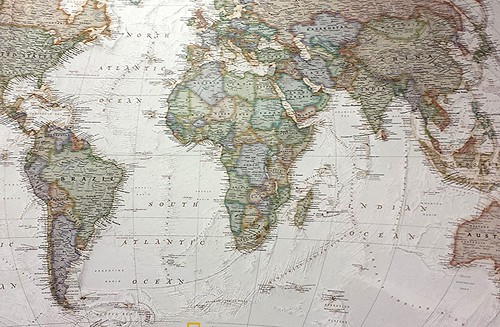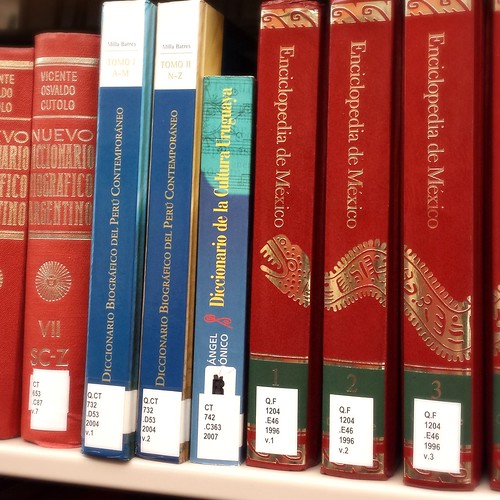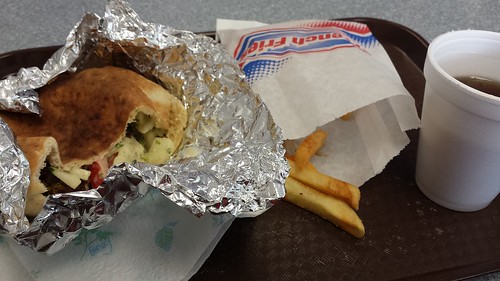Despite the recent chill foretelling the start of winter in Champaign-Urbana, it is already time to start planning for summer and the upcoming 2014-2015 academic year. Many undergraduate and graduate students whose research is related to area studies use the summer break to study a language relevant to their academic and professional interests. Foreign Language and Area Studies (FLAS) Fellowships are an important resource for these students, as well as those hoping to pursue language and area studies abroad and on campus during the academic year.
At Illinois, FLAS Fellowships are offered by area studies centers, each of which provides funding for eligible languages spoken in the region. The deadline for this round of fellowship applications has recently been announced: February 7, 2014. Area studies departments may have different internal deadlines so students should check the departmental websites as well. In the coming weeks, students interested in this opportunity will have to start thinking seriously about their application materials. This post is an introduction to the FLAS Fellowship and to the library resources available to support FLAS fellows and language study at the University of Illinois.
About the FLAS Fellowship
FLAS Fellowships are a federally-funded initiative of the Department of Education, which awards grant money directly to institutions of higher education for a four-year period. These grantees host annual competitions to distribute fellowships to qualified applicants enrolled at their institution (U.S. Department of Education, 2013). At the University of Illinois, fellowships are awarded through our various area studies centers, each of which offers fellowships for languages spoken in the region covered by the Center (FLAS Fellowships at Illinois, 2013). For example, the European Union Center funds students for Arabic, Bosnian-Serbian-Croatian, Bulgarian, Catalan, Czech, French, and many other European languages.
Funds are available to Illinois graduate and undergraduate students, who are United States citizens or permanent residents. However, undergraduate fellowships are limited to students studying a less-commonly taught language at the intermediate level or above and application procedures for undergraduates are slightly different. Fellowships are awarded for summer language study in the United States and abroad, as well as academic year awards for a combination of language, area studies and, in some cases, dissertation research. More information about the application process can be found on the FLAS Fellowships at Illinois website, including details about upcoming information sessions. The first information session for students is on December 4th, 2013 (FLAS Fellowships at Illinois, 2013).
Library Resources for Language Study
The University Library offers a variety of resources for students, who are studying a foreign language or are away from campus for the duration of their fellowship. Reading is one of the best ways to improve language skills and the library has a large collection of foreign language reading materials. The International and Area Studies Library collects materials in the vernacular languages of Africa, East Asia, South Asia, Central and Eastern Europe, the Middle East, and Latin America and the Caribbean. These resources include reference works, dictionaries, journals, magazines, and books (including fiction) written in the target language. Reference books and current issues of periodicals are available for use inside the library, while back issues of periodicals and books can be checked out from the Main Stacks. Similar materials in the languages of Western Europe are available through the Literatures and Languages Library.
Foreign films are among those available for check out at the Undergraduate Library. (Take a look at this helpful post on how to find them in the catalog.) Additionally, print and online versions of international newspapers are available through the History, Philosophy, and Newspaper Library. The library also subscribes to Tell Me More, an online language learning software. While the selection of languages is limited to Western European languages, the software is a great resource for beginners and for those hoping to keep up with their language skills after returning from a FLAS fellowship.
Perhaps the best resource the library has to offer students (both those on campus and abroad) are the subject specialists in the library, many of whom have created Libguides dedicated to language acquisition resources in their subject areas. The International and Area Studies Library is home to subject specialists in many regions. They are great source of information for vernacular language material, as well as research assistance for those students whose FLAS fellowship includes an area studies or dissertation research component. Other subject specialists can be found throughout the University of Illinois library system. All of our librarians can be contacted by email and additional assistance is available to students through the Library’s virtual Ask-a-Librarian service. Finally, students who are enrolled at the University during the period of their fellowship retain access to our collections through remote access to electronic resources and DocExpress.
Language study, including a FLAS fellowship, can be an essential component of your academic career. Keep in mind that the University Library has many resources available to support language acquisition and scholars working with foreign language materials.
References
U.S. Department of Education (2013). Foreign Language and Area Studies Fellowships Program. Retrieved from http://www2.ed.gov/programs/iegpsflasf/index.html.
FLAS Fellowships at Illinois (2013). FLAS Fellowships at Illinois. Retrieved from http://publish.illinois.edu/illinoisflas/.




 Falafel sandwich special at Jerusalem Middle Eastern Cuisine.
Falafel sandwich special at Jerusalem Middle Eastern Cuisine.